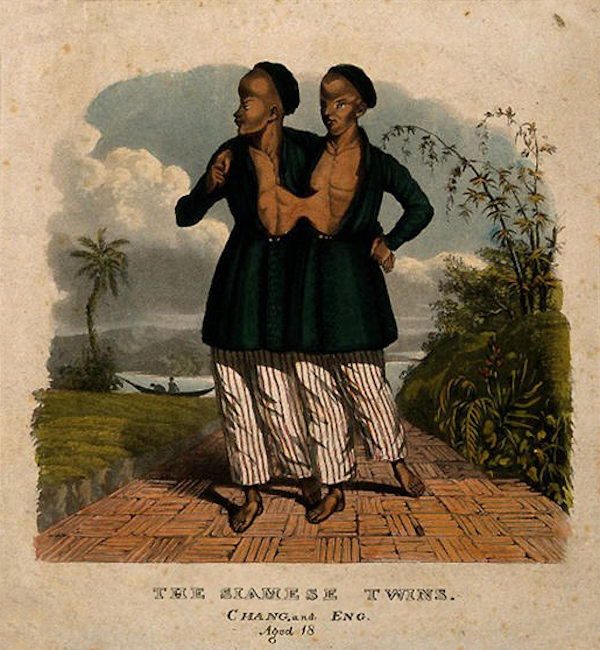 |
| Portrait by Édouard-Henri-Théophile Pingret, 1836; the brothers were fifteen in that year. |
Chang and Eng, the first "Siamese twins", are historical figures along the line of Napoléon or Cleopatra, Leonardo da Vinci or Joan of Arc; we know what they're famous for, even if we don't always know much more than that. I didn't want to go into their whole story - you can certainly read about them here, if you like - but I did want to share these few portraits of the brothers. Mainly because I was so pleasantly surprised to find them portrayed so respectfully. There's no sensationalism, very little exoticizing in these images, they're merely straightforward, dignified portraits. Instead of accentuating or caricaturing their ethnicity and disability, the two men are presented as educated and cultured young gentlemen. For the time and under the circumstances... remarkable.
 |
| Painting by an unidentified artist, British School, circa 1830s. |
 |
| Miniature by an unidentified French or Dutch artist, circa 1835-36. |
 |
| Lithograph based on the above painting, 1836. As is often the case with engravings, the image is reversed. |
 |
| Colored lithograph of the brothers portrayed in less formal attire, circa 1830s. |
 |
| Lithograph circa 1839. Eng is holding an open book which contains an illustration of the brothers. |
 |
| Portrait by an artist only identified as "Irvine", 1830. |
 |
| Engraving based on the above painting, 1830. |
 |
| Colored lithograph of the brothers in more "exotic" garb, circa 1829. |
 |
| Currier and Ives lithograph, 1860. The brothers are shown enjoying various activities, with vignettes of their respective wives and children. |
 |
| A detail of the Pingret portrait. |

























































